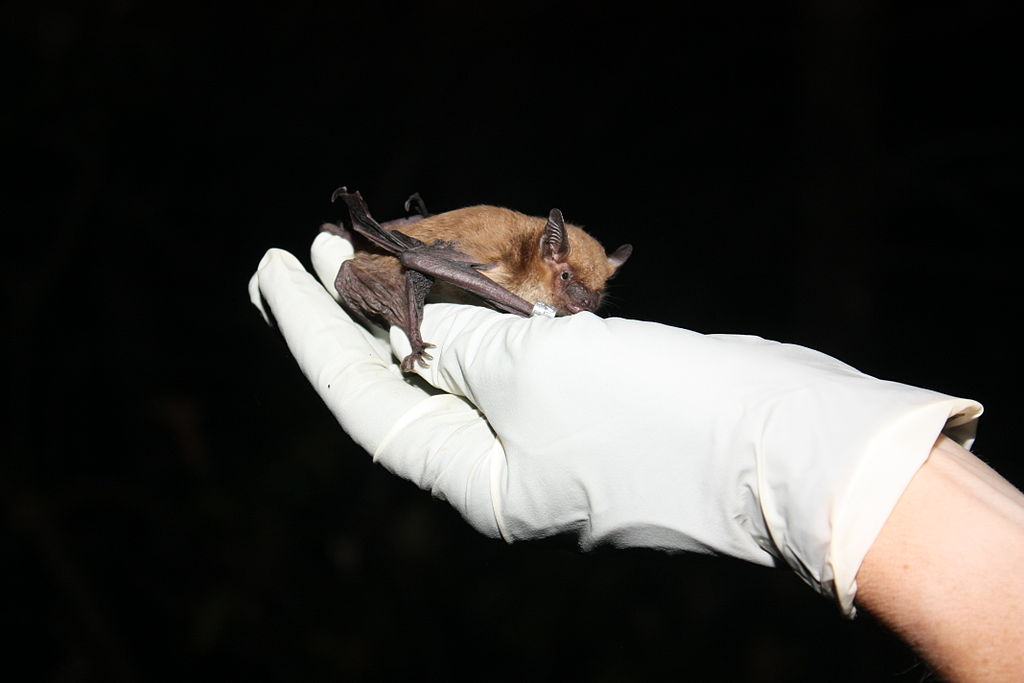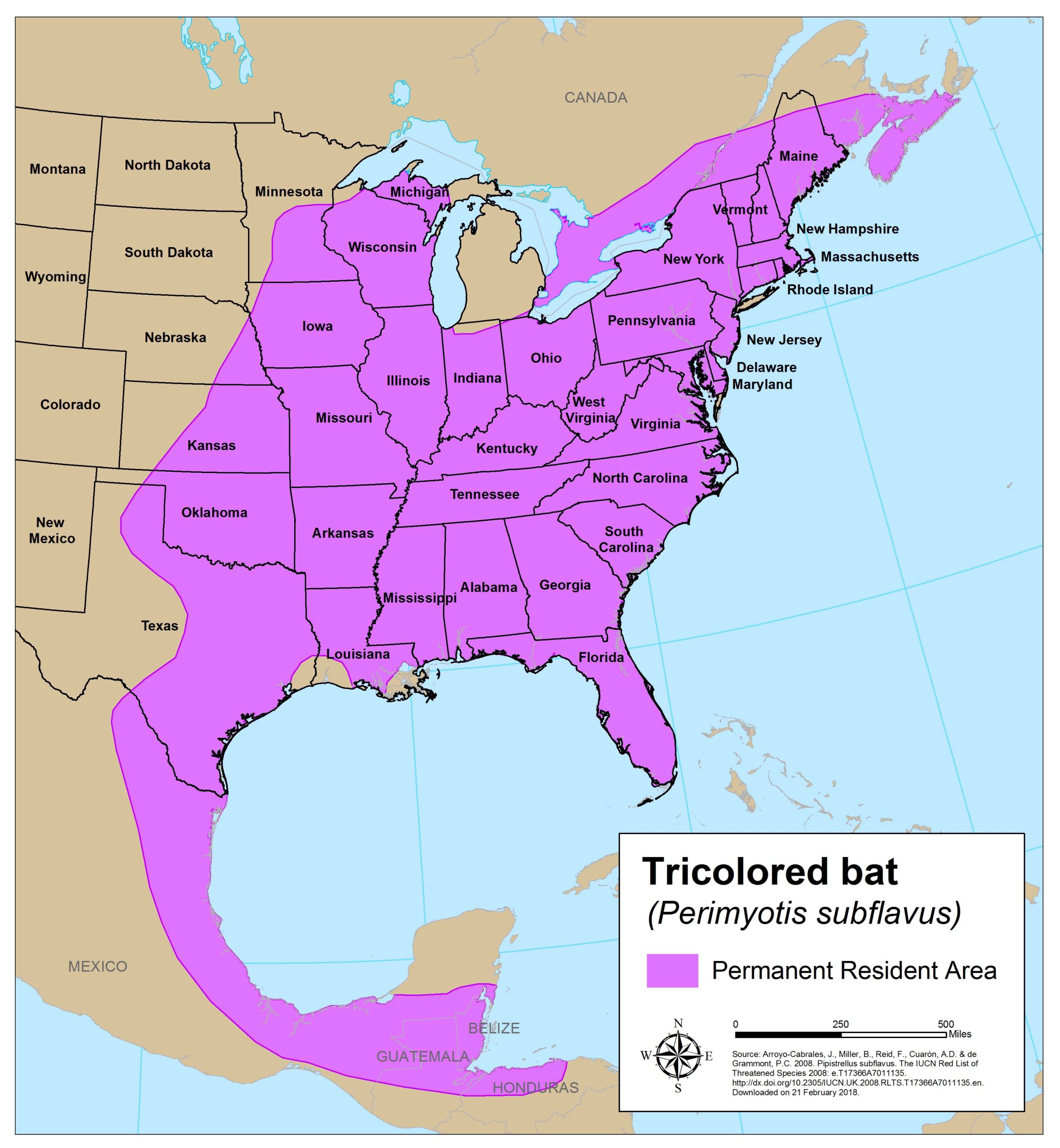In December 2017, the U.S. Fish and Wildlife Service (USFWS) announced a 90-day finding for the tricolored bat (Perimyotis subflavus) – one of the most common bat species native to the eastern United States (map). With this finding, the USFWS is inviting scientific and commercial stakeholders to submit comments as the agency further investigates whether the tricolored bat should be listed as threatened or endangered under the Endangered Species Act (ESA). If listed, this change could halt development projects that involve tree-clearing until a bat survey can be completed, and further delay those projects where the bat is found by limiting tree-clearing to specific times of year and defined parameters.
If you have concerns about the implications of the tricolored bat potentially being listed as threatened or endangered, you can submit comments or scientific data to the USFWS here. Please submit your comments and data as soon as possible – the USFWS has not provided a deadline for comments or a timetable for making their status determination.
Virginia and Maryland developers may remember a similar circumstance when the northern long-eared bat was listed as threatened under the ESA, causing a significant period of uncertainty for many projects until the issue was resolved with the final 4(d) rule for the bat. The tricolored bat does occupy similar habitat as the northern long-eared bat and is also suffering from the effects of white-nose syndrome. Because of these similarities, it is possible that the USFWS may implement protections similar to those in place for the northern long-eared bat, depending on the final status determination. You can read more about the time of year restrictions in place to protect different species of bats in our March 2017 Field Notes article.
Please reach out to the contacts below if you have questions about how this potential threatened or endangered listing could affect your local projects!


